The text is read by Pavel Potseluev ( Alpha Centauri channel ). Happy viewing.
Although the film was filmed in 1993, these same technologies are used today in the production of computers, smartphones and other electronic devices.
For example, multichip assembly now being used not only in supercomputers, but also in household computers:

" Chiplet » AMD Threadripper 3990X with removed cover-metallic heat spreader
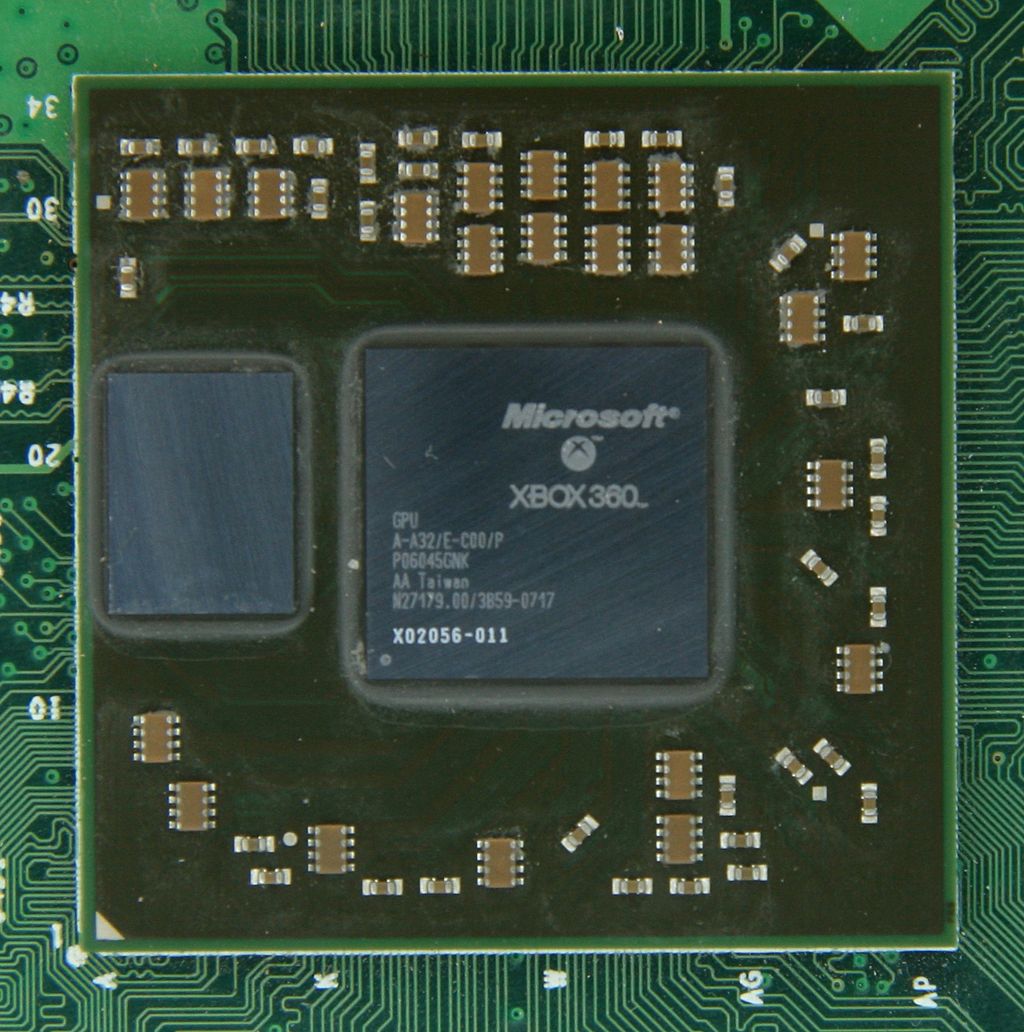
graphics module XBOX 360 of two chips on a single substrate
surface mount technology is practically not changed. Today's pick-and-place machines are faster and able to place smaller components.

I worked with such a machine: one head, two cameras on the bottom for components, one on the head, about 40 automatic feeders (feeders) of components, automatic change of nozzles.
Wave soldering is used for lead-out components. The glued components can be seen, for example, on the printed circuit boards of the power supply units from the underside.

Computer mouse board. Red glue drops are visible under the SMD components.
Dice packaging in plastic cases with various types of lead frames is widely used in the production of consumer electronics components.

Internet Router PCB
The software part is a bit outdated, but generally correct. The list of types of system software has expanded significantly, and applications still use the OS to control computer components.
Interesting places in the film
The machine controls the force when installing the output components. Here the installer did not hit the holes the first time and made several more attempts.

Typically, when a certain number of errors occur, the machine will have to throw a component into a basket of defective parts, take another component from the feeder and try to install it. This allows you not to stop the assembly line.
Writing an article on materials science is interrupted by a little man in one of the most brutal ways.

In the episode with the connection of the leads, you can see the process of forming an arcuate jumper immediately after the wire is attached to the crystal platform.


from here
(~70 – 100 ) . , . .
Plush toy on a mainframe closet .
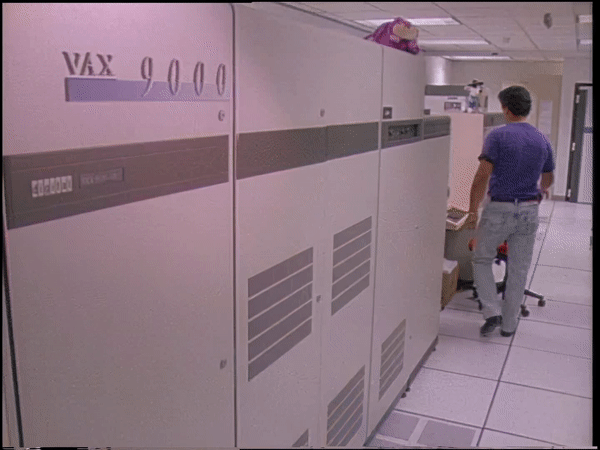
Another way of dividing the wafer into separate crystals is by scribing. The same diamond saw cuts the plates and then rolls them and breaks them apart.

On the screen saver of the film, a running wafer of a characteristic round shape with a cut off chord.

A silicon wafer in English is called "wafer", which literally translates as "wafer". After the chips are made, a checkered pattern is visible on it.

Buy
cheap uncut silicon wafers with chips from suppliers on Aliexpress.com Search for "silicon wafer".
By the number of marked chips, you can estimate the percentage of yield of good crystals from one plate.

According to rumors, for Intel and AMD processors with large crystals, this value lies in the range of 30-70%, depending on the debugging of the technological process.
A Star Trek-themed Mac screensaver diskette set for $ 75.

Computers in the film
Macintosh SE / 30
In the first shots with the packaging of computers, you can see the modification of the Macintosh SE , which has been produced since 1989.
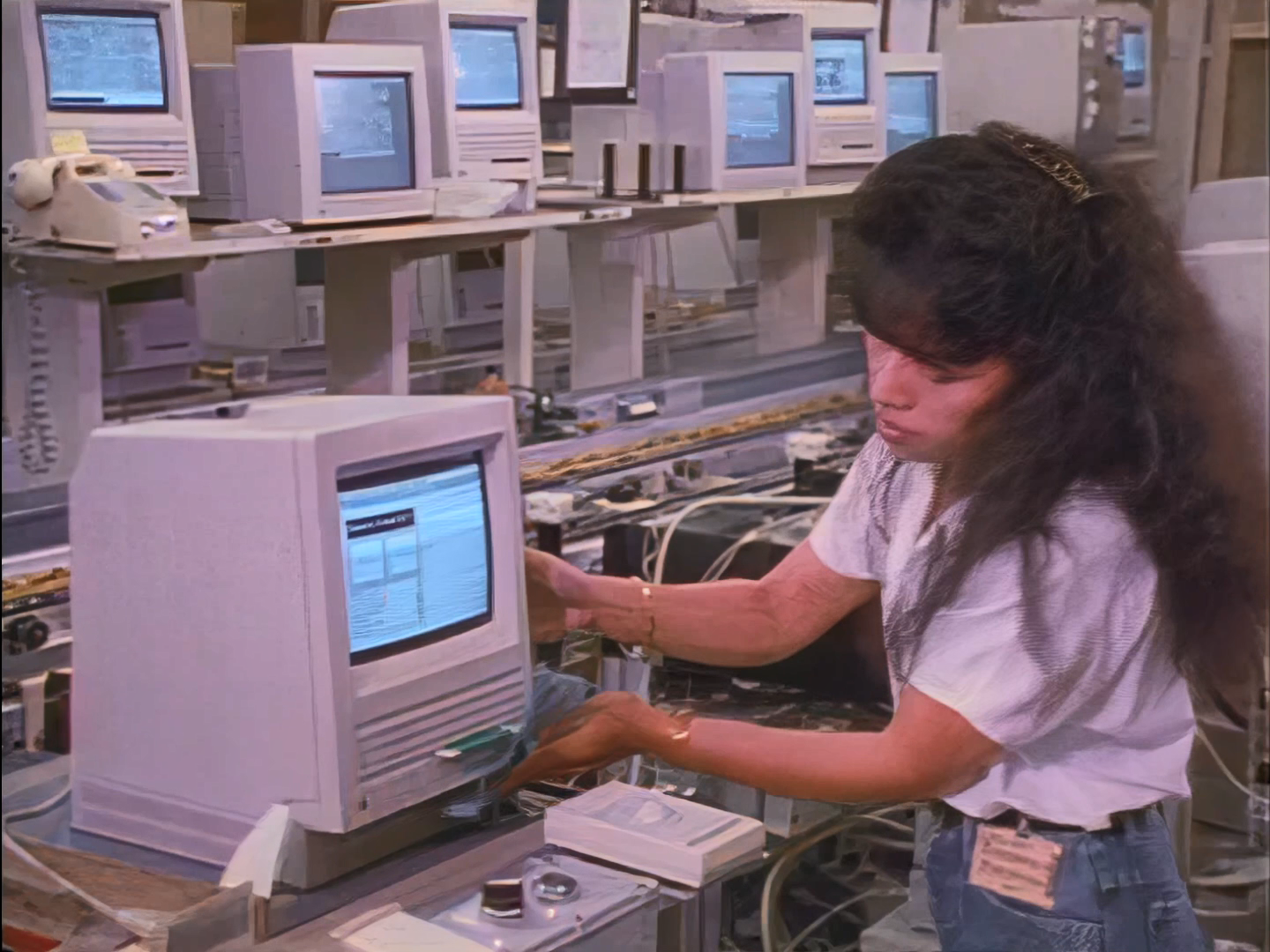
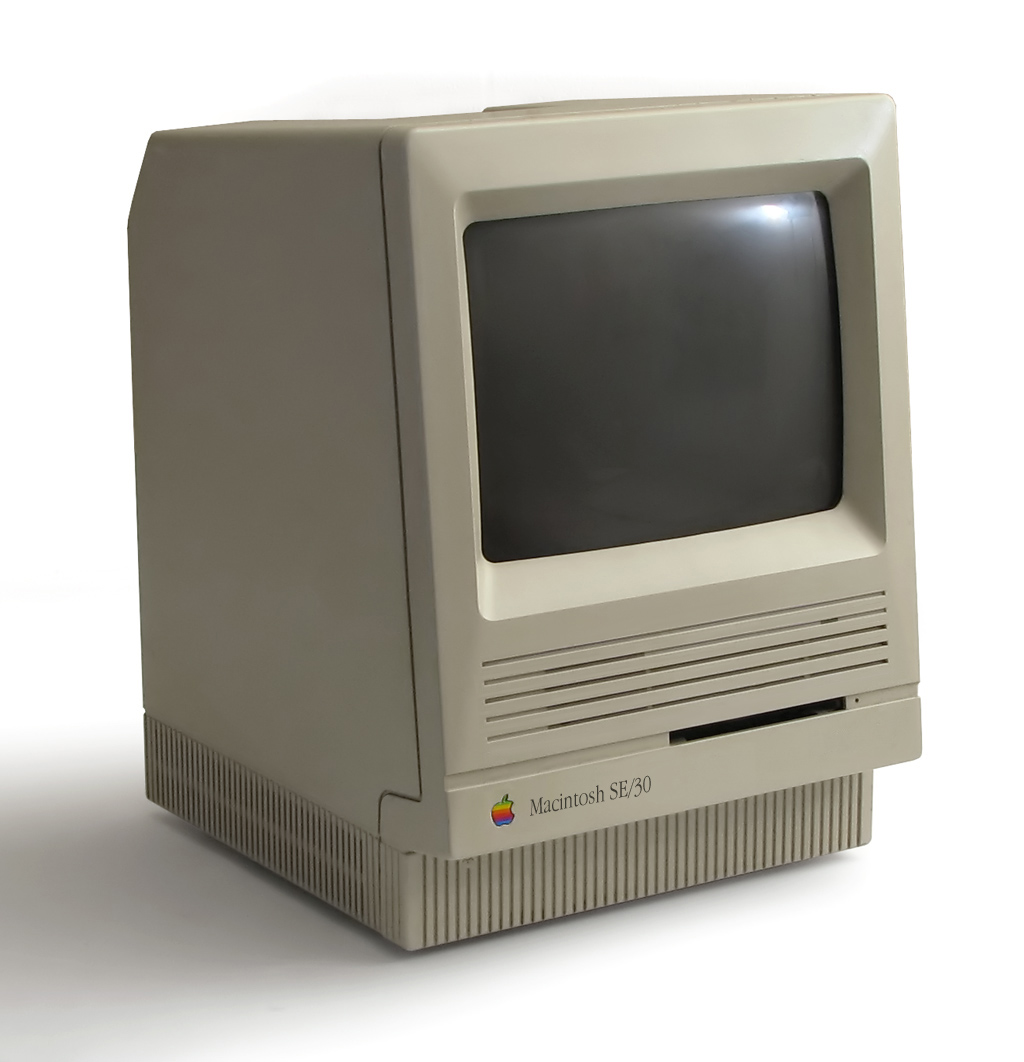
from here
HP 95LX
The predecessor of Hewlett Packard handhelds with MS-DOS and an analog of the Intel 8088 processor .
In the film, working with this computer does not look comfortable.
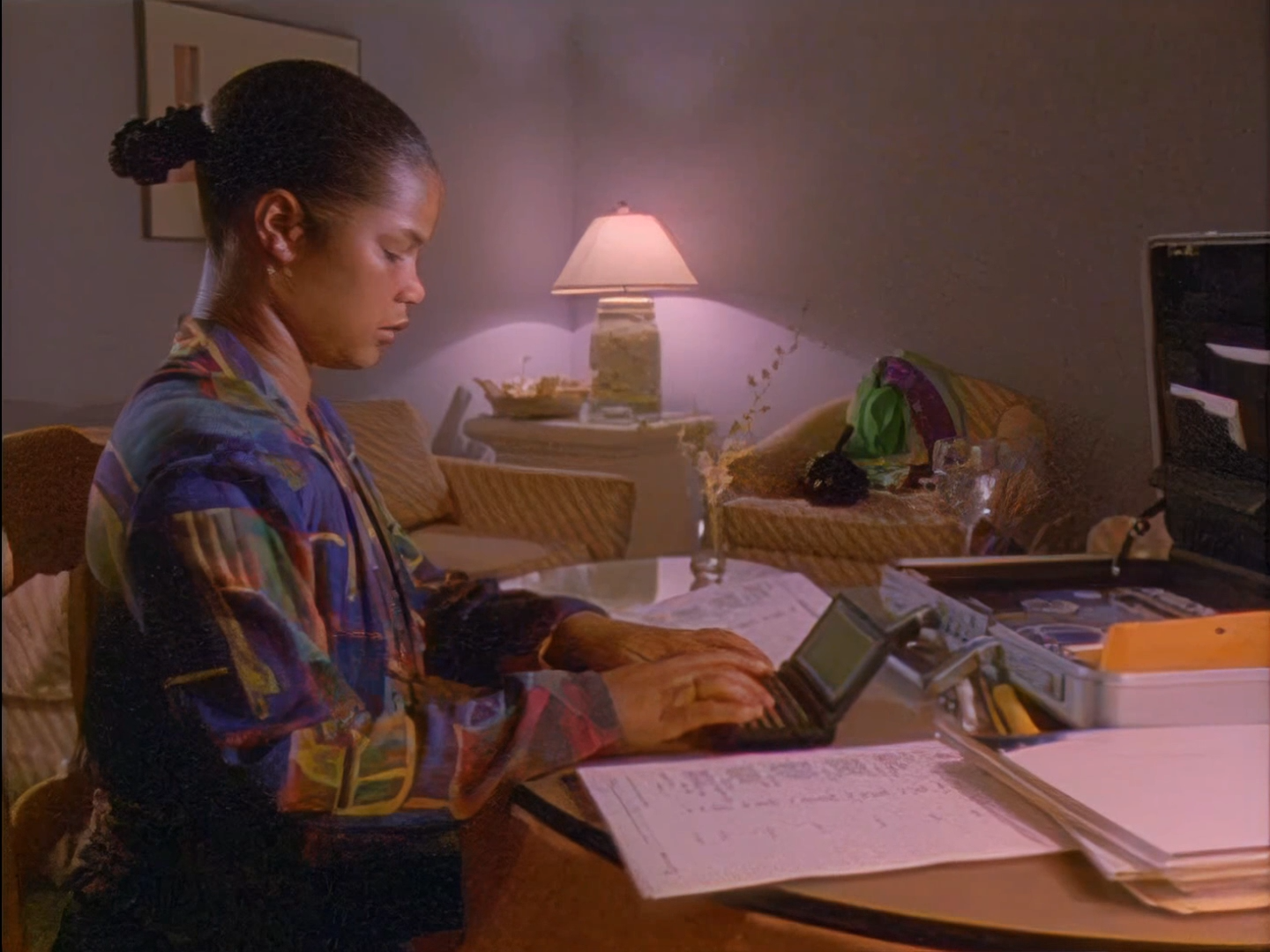


from here
DECStation 5000
The engineer uses one of the modifications of the DECstation 5000 workstation with two blocks of additional drives on the right. Powered by MIPS processor R3000 / R4000 , one of the variants of which is also installed in Sony PlayStation (first generation) and Sony PSP. The operating system is a variant of Unix developed by DEC .
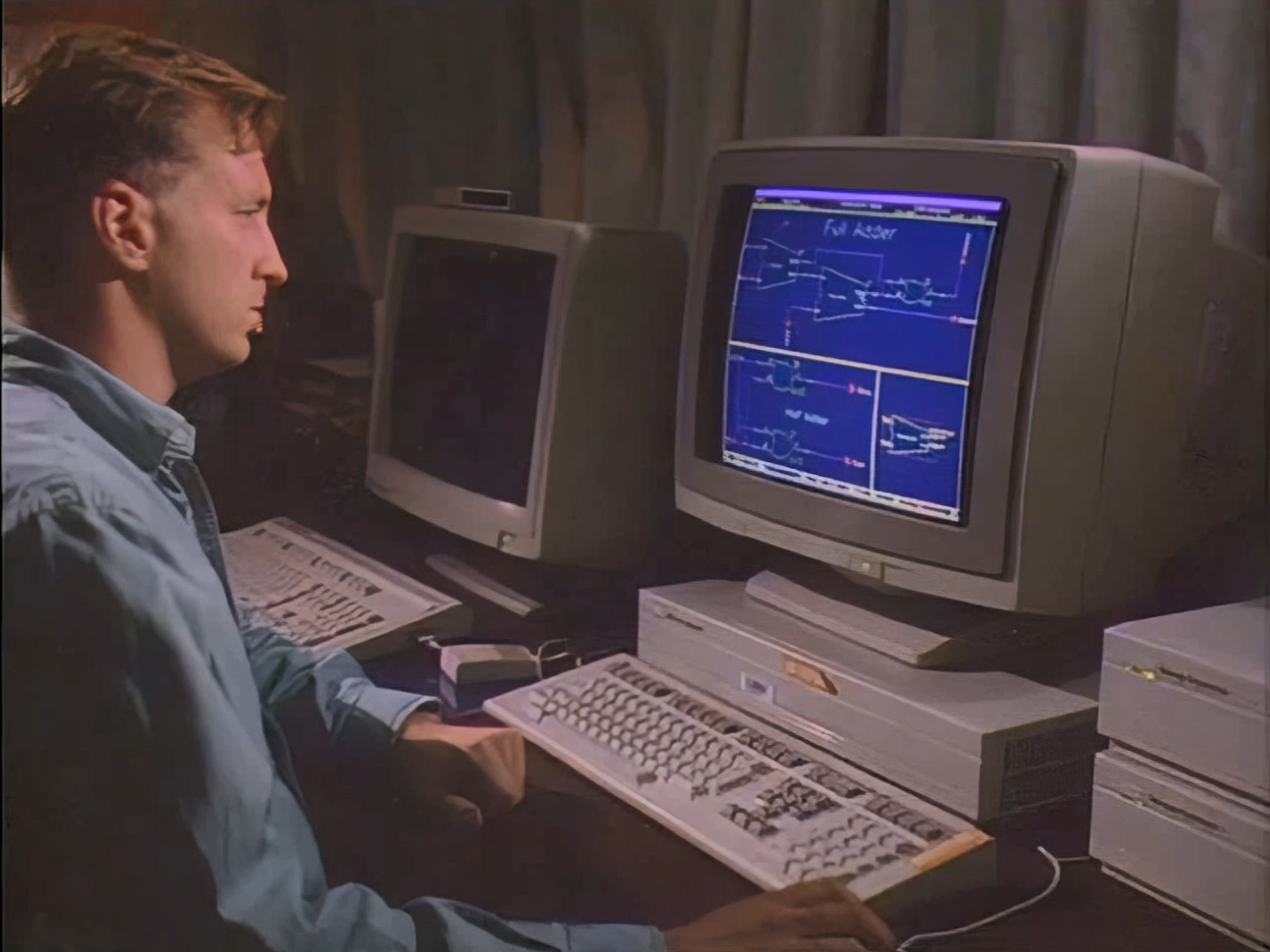


from

here from here
And another DECStation 5000 with a rather ugly mouse.

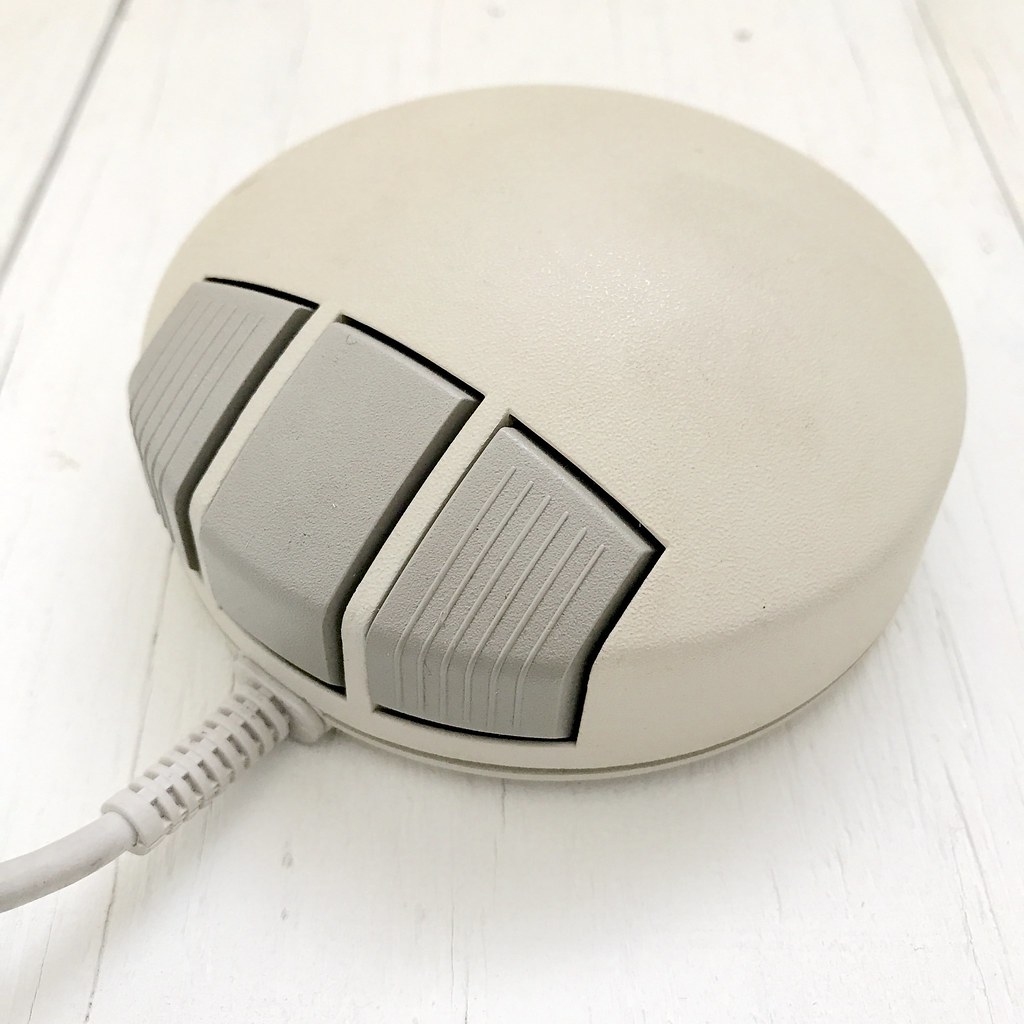
from here
Apollo DN4000
Apollo Computer (acquired by HP in the late 1980s) made a series of workstations, one of which can be seen in the film's PCB Trace episode. Powered by Motorola 68k and a variant of the Unix operating system .
In the movie, the bright green monitor LED in the upper right corner is taped by the user.
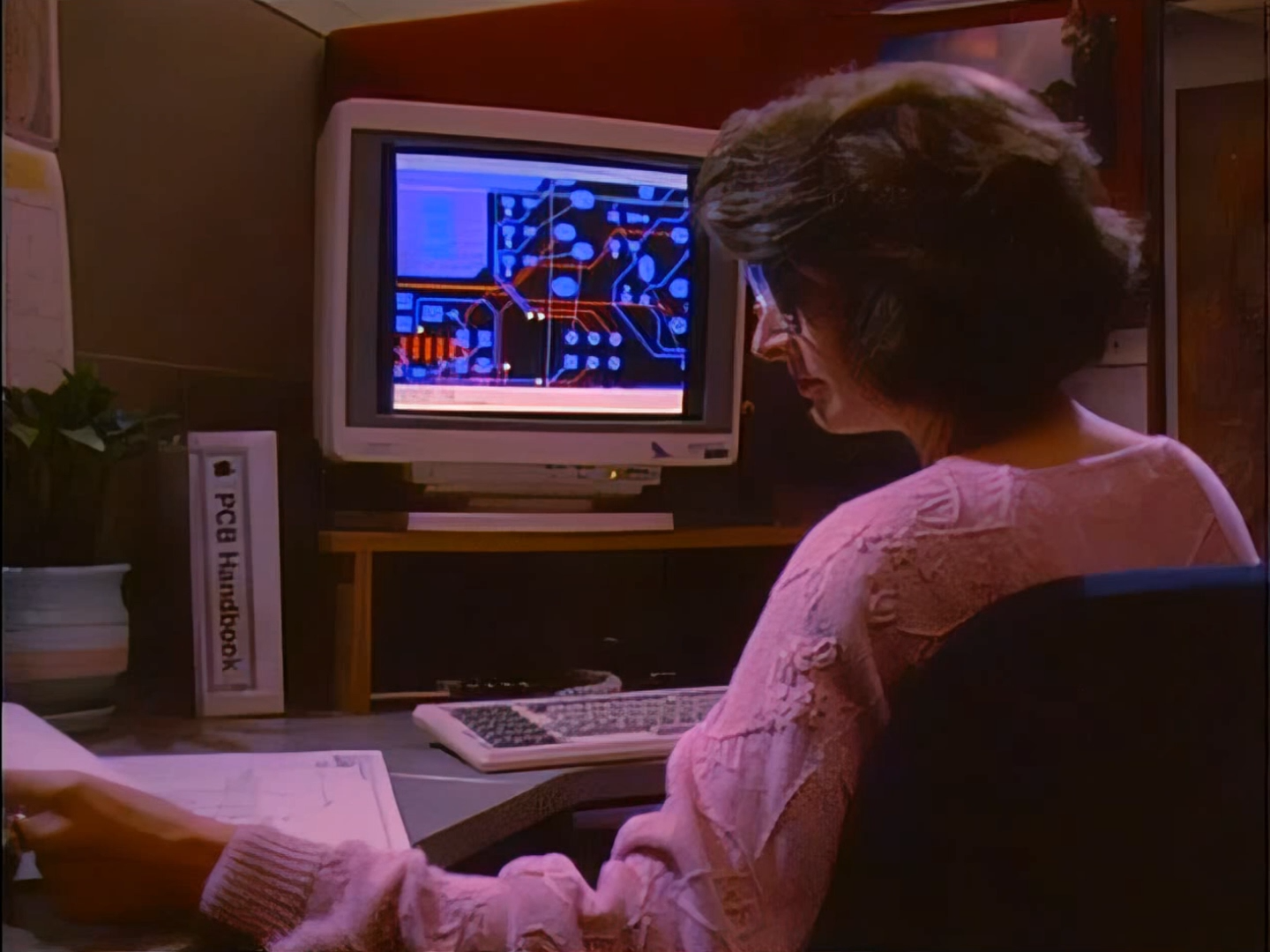
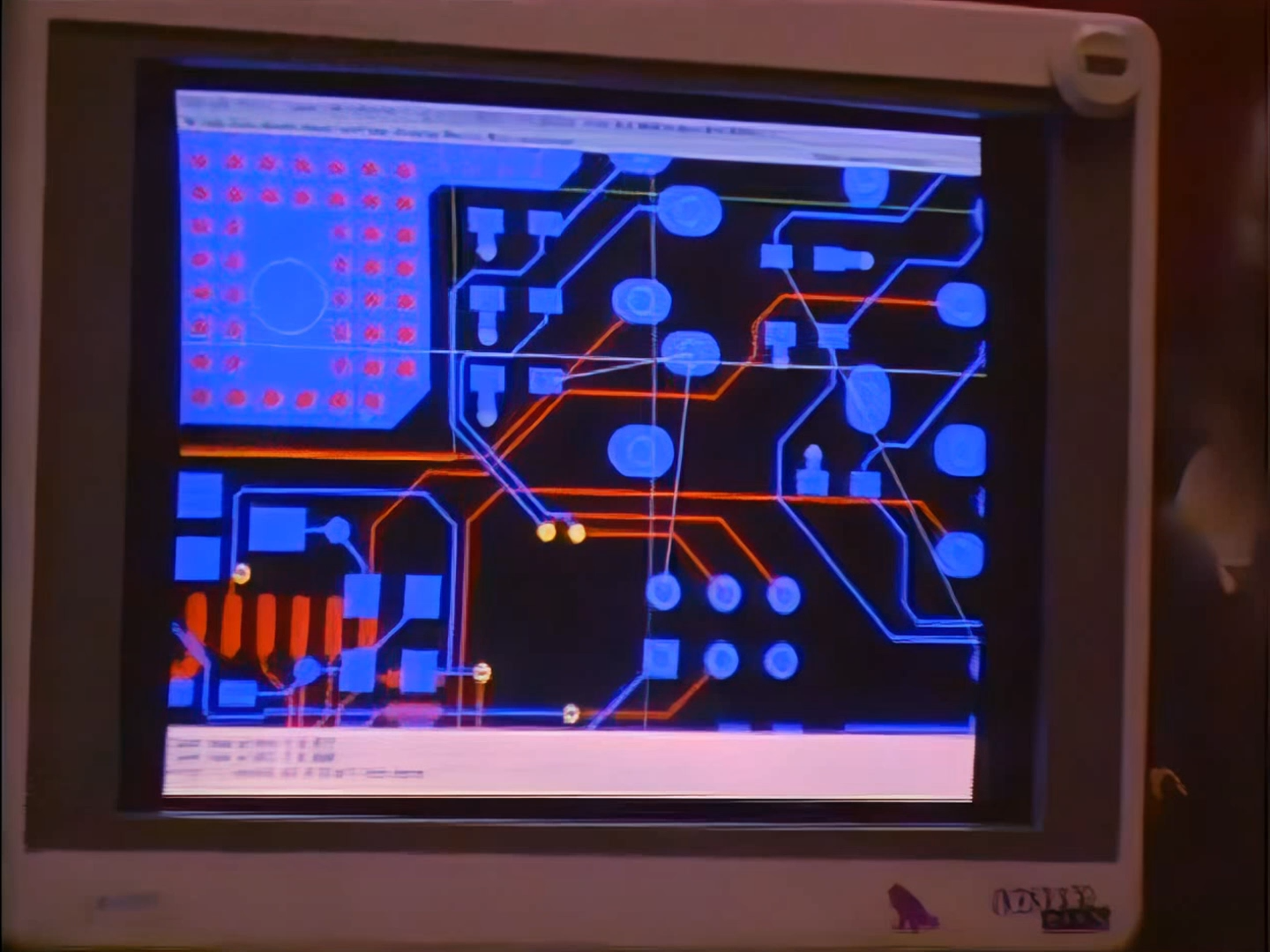

from here from

here
Macintosh
One of the modifications of the first Macintosh runs a motherboard testing rig.
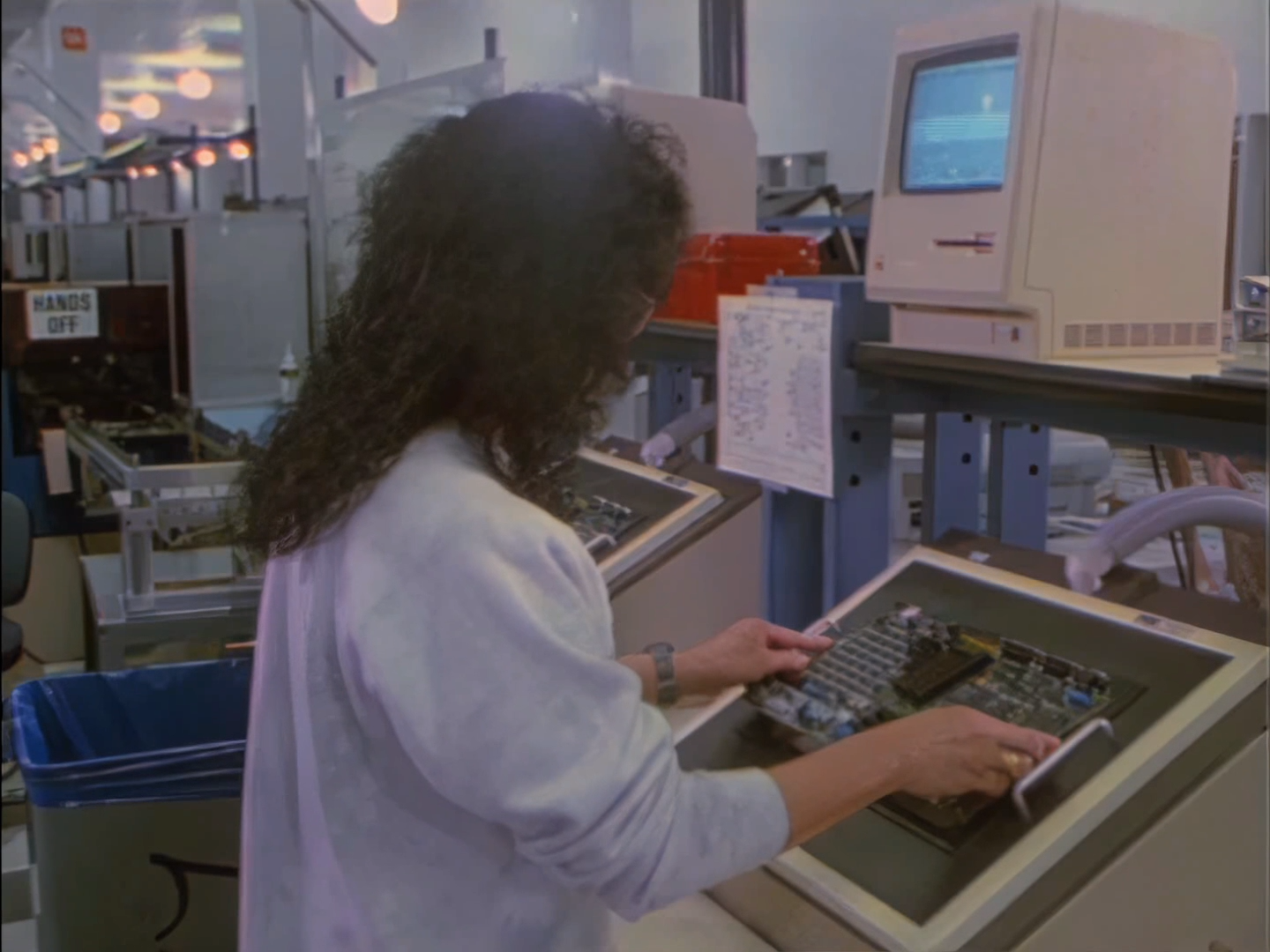

from here
Macintosh II
On the assembly line Macintosh IIci , manufactured since 1989.
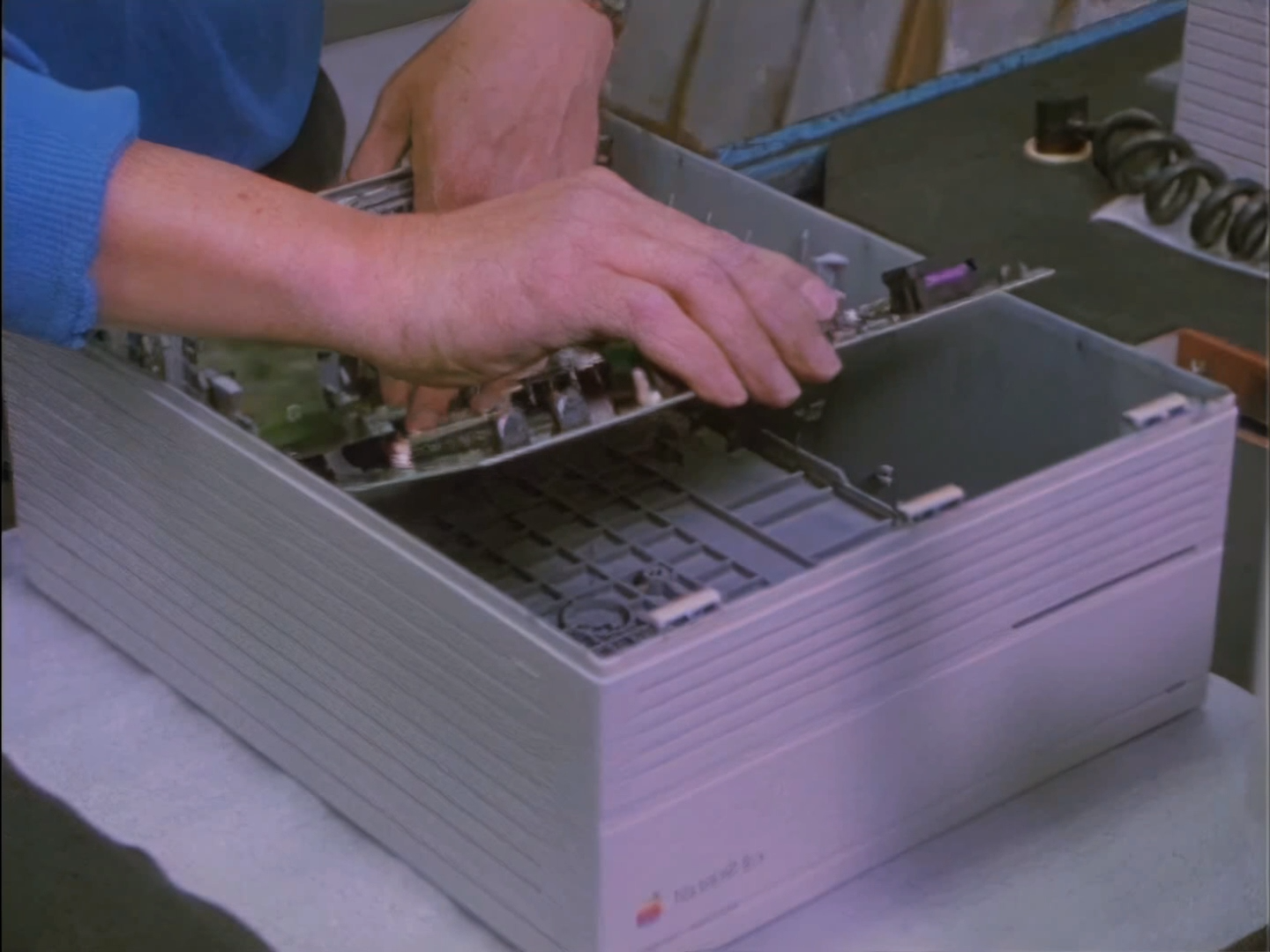

from here
IBM PS / 2 Model 9577
The material science article mentioned above is being written on an IBM PS / 2 with an Intel 80486DX2 processor and OS / 2 v2.00 operating system .


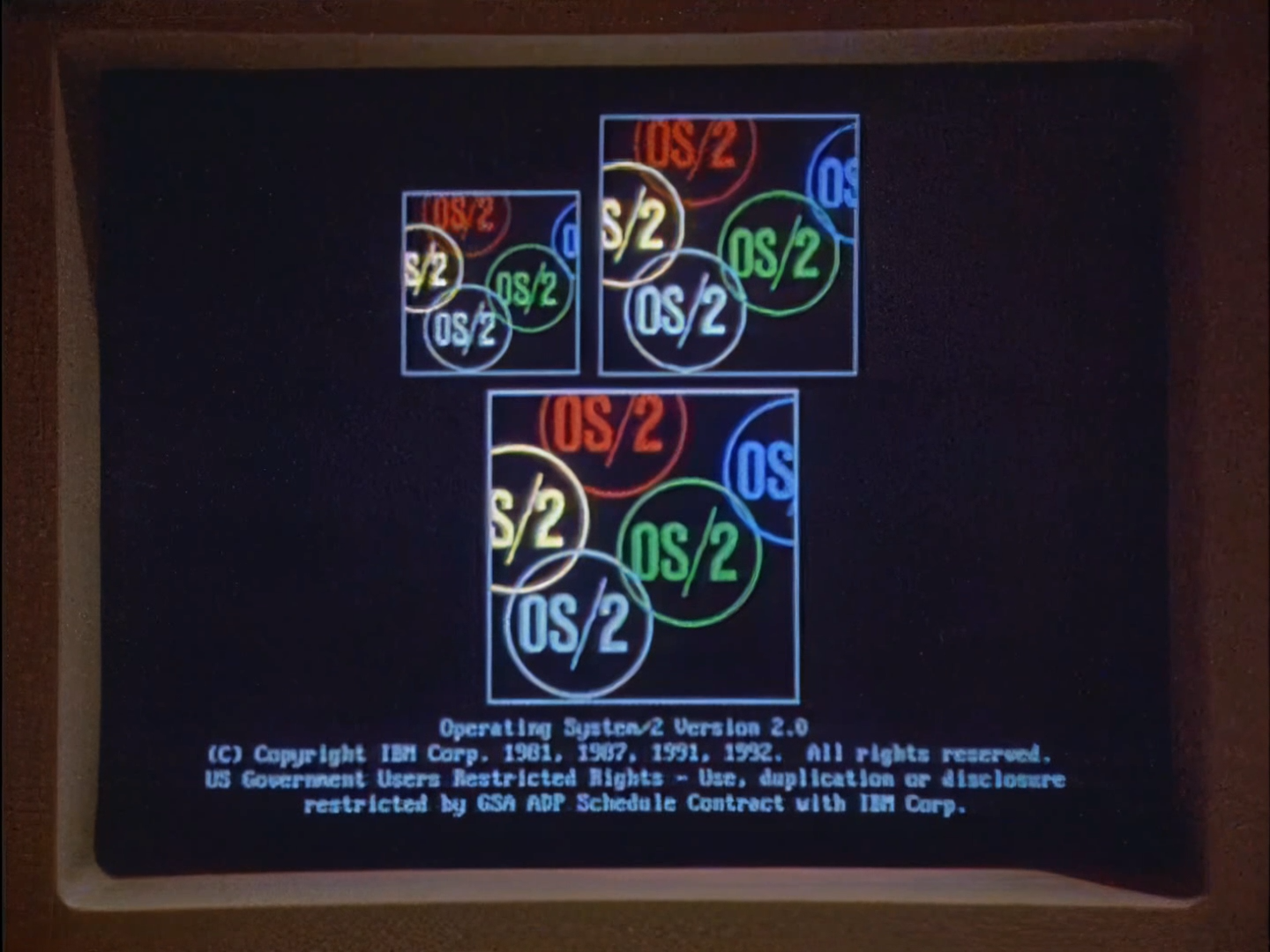


from here
VAX 9000
The plush toy mainframe is a DEC VAX 9000 supercomputer . The exact modification is difficult to determine. Saw the same computer in a 1991 Microsoft movie .


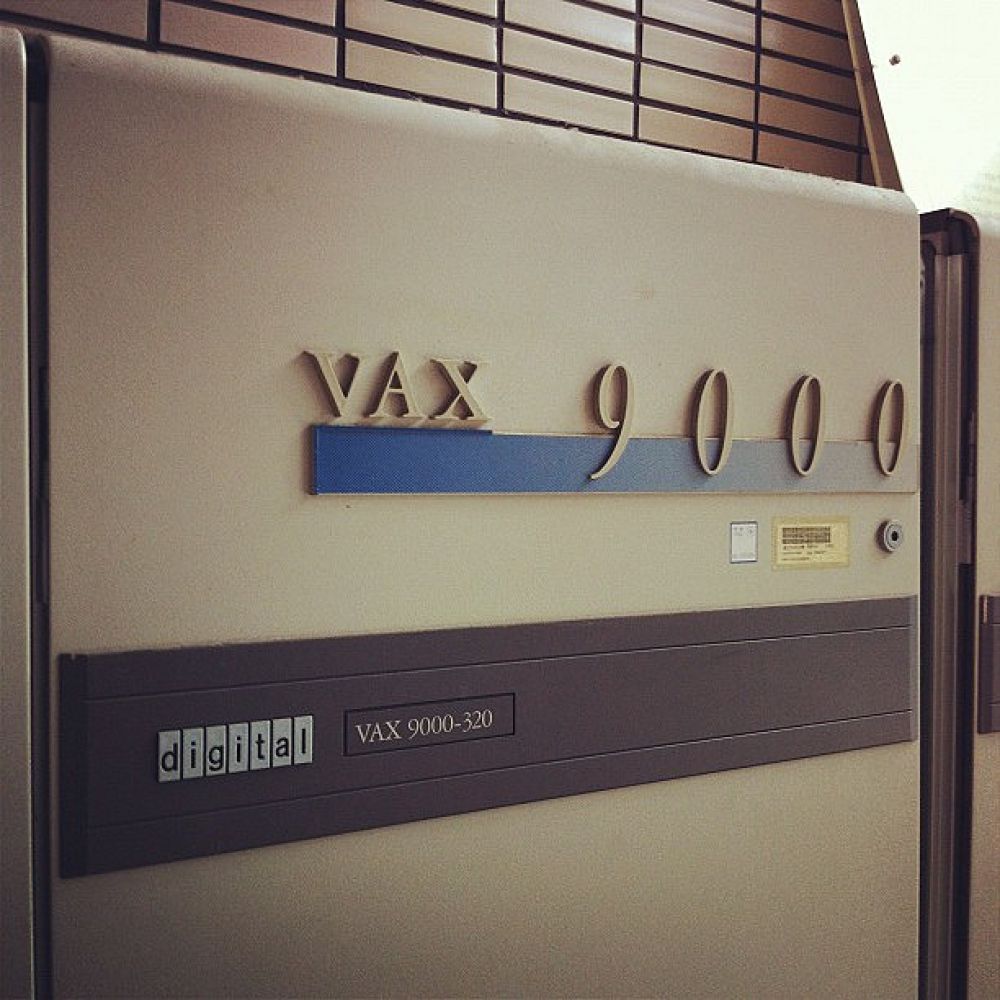

In this photo, you can consider how to install assemblies into a planar module, and also understand why the power connectors are so located on the assembly case:

PowerBook
Left in the frame Apple Macintosh PowerBook 140/145 , right PowerBook 160 . This is the second generation of Apple laptops. Both had a monochrome screen and a Motorola 68k processor.


PowerBook 140

PowerBook 160
Unidentified POS terminal in a restaurant
Presumably IBM, released between 1989-1993. Has a touch screen and monochrome amber CRT monitor. Perhaps one of you will help with identification.

The computers used to control machine tools in manufacturing are difficult to identify. But even when determining the hardware platform, they run specialized software, information about which is extremely difficult, if not impossible, to find.
What's next?
I am planning to translate the film Silicon Run I of the same series, which goes into more detail about the process of making semiconductors on a silicon wafer. It shows the processes of growing a crystal, doping of plates, deposition, etching, and the principles of operation of MOS transistors with visual animations and explanations.
There is also a film about MEMS technologies, in which, in particular, there is an example of manufacturing and an explanation of the principle of operation of the print head of an inkjet printer.
If you want to support me in this, you can send a donation , which I use to pay for the work of the voice actor.
You can subscribe to my channelin the telegram, where I sometimes post materials about the development of interesting electronic devices and announcements of such publications.
Thank you for attention.